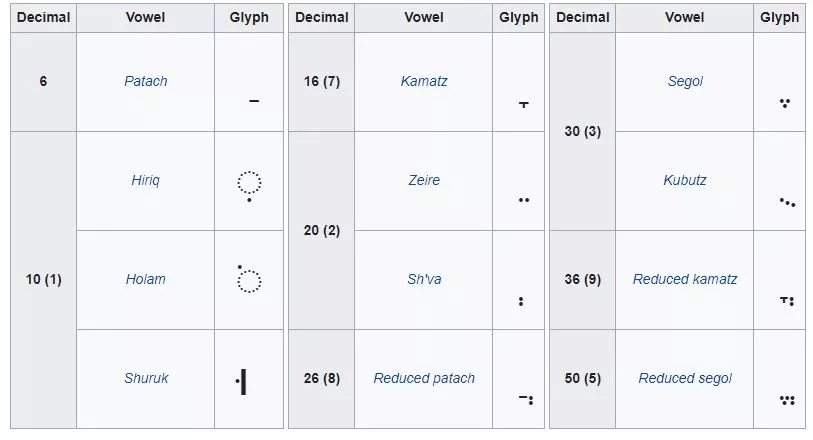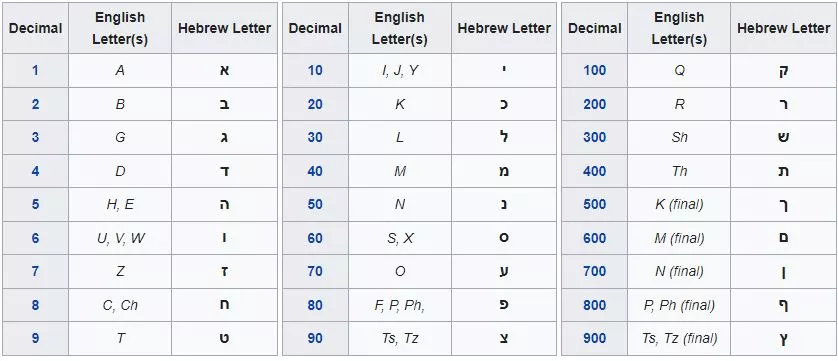In their writings, biblical authors rarely deliberately used numerical styles or the Gematria code.
Matthew built his genealogy around a 14-generation recurring pattern. However, gematria playing
with both the numeric values of Hebrew or Greek words is at best confusing. The prophets
delivered their message in a way that they predicted their audiences to comprehend. The books of
the Bible were written by men in order for their contents to be understood.
Many people have attempted to use the gematria code as proof of the Bible’s perfection in the past. In our day, new arrivals repeat the efforts of others, irrespective of the fact that such an exercise is fraught with difficulties. To begin with, number patterns such as the period leading up to your letter are chosen with some subjectivity. For example, in Genesis 1:1, assigning a quantitative score to each letter and then totaling the specific number of each word produces the following series: 913, 203, 86, 401, 395, 407, and 296. These numbers do not convey a divine message to me. But what about the content? “God created heaven and earth in the beginning.”
Table of Contents
The Matthean example of Gematria Code
The Matthean example is also useful for demonstrating how selective subjective experience is at
work in order to “produce” a pattern. Why were the verbs excluded from your selection? There are
27 of them (3 x 9). Why was “Babylon” in verse 11 chosen as a break? Verse 1:6b provides a more
significant break in Matthew’s list: “…fathered David the king.” In comparison, the statistics for
verses 1-6 are as follows: 90 words (that is 2 x 3 x 3 x 5, and the factors total 13!), 6 substantive
nouns, 34 names (2 x 17), 21 different names (3 x 7), 15 conjunctions (3 x 5), 19 articles, 3 parts of
speech, and so on.
A variety of things can be defined and found within any section of text. Trying to
assign numerical values will inevitably result in numbers, and numbers will inevitably be multiples of
3, 7, and so on. Simply counting distinct subsets until a sequence of sevens or another advantageous
number emerges is all that is required. When it has finished, the “decoder” moves on to a different
text and repeats the process there.
Hort & Wescott Gematria Code
The use of ad hominem defenses should be avoided when discussing Westcott and Hort. What
exactly is an ad hominem defense? For instance, person B and theory A go together. Person C claims
that Person B is a bad person. As a result, theory A is dubious at best. Is theory reliable? would be a
better query. If so, no problem.
The Greek texts of the New Testament that are currently in print were compiled using manuscript
data. They also coincide quite well with the text written a century ago by Westcott and Hort. This
could be seen as praise to the critical nous of Westcott and Hort. They had to make textual
judgments based on less information than is available now, but they were still able to come to many
of the same findings that textual critics of the twentieth century have.
Describe Gematria
We should talk about Gematria simply because the majority of people have never heard of it. The
practice of converting numbers into letters is known as gematria. I decode numbers using the
ancient occult practice known as gematria to reveal the false reality that we are living in. I decode
news, sports, and entertainment headlines to unveil the numerical code that underlies the narrative.
Gematria code

Probably used during the time of the Bible, the gematria code is a Hebrew alphanumeric code or
cipher that was later embraced by other cultures. In Jewish culture, it is still commonly done. Other
languages and cultures have also employed analogous systems, including the English gematria,
Arabic abjad numerals, and the Greek isopsephy, which was later derived from or inspired by
Hebrew gematria.
The ancient Babylonian culture used a type of gematria system called “Aru,” but because of their
logographic writing style, the numerical assignments they decided to make were to the whole
words. These words’ values were arbitrarily designated, and correspondences were established
using tables. The gematria structures used by the Hebrew and Greek civilizations, which employed
alphabetic writing scripts, were very dissimilar from this practice. Other languages and cultures have
adopted analogous systems that are based on or influenced by Hebrew gematria, Arabic abjad
numerals, and English gematria. There’s really currently no agreement among academics as to
whether Greek isopsephy or Hebrew gematria was being used first.
Gematria sums can be made up of a single word or a long series of calculations. The word chai,
which means “alive,” is a well-known short exemplar of Hebrew numerology that employs a
gematria cipher. Its two letters add up to 18. This has led to the Jewish people considering the
number 18 to be lucky. Money donations in multiples of 18 are extremely common. Gematria sums,
in contrast to numerology, are typically derived from textual content and typically only use nouns in
the calculation.
What is the Gematria code 666?
The significance of the number 666 in the book of Revelation has undoubtedly been the subject of
numerous theories. Why, then, should anyone think it actually refers to Nero Caesar rather than
something else? In fact, there is an intriguing piece of historical evidence that the book was
understood by its first readers.
This number, which is derived from the gematria code, which is a practice in language families that
use letters to show data, adds up the total numerical value of each letter in a word to portray a
name. There is a significant difference between gematria and codes.
FAQs on gematria code
-
How many different gematria ciphers exist?
As many as 231 different replacement ciphers are listed by some authors, each one connected to one of the 231 mystic Gates of the Sefer Yetzirah.
-
What is the number of God?
The minimum number of turns necessary to solve a Rubik’s cube from any starting spot is known as the “God’s number,” or the diameter of the Rubik’s graph (i.e., in the worst case). This number equals 20, as demonstrated by Rokicki et al. (2010).
-
In the Bible, what number does God have?
The number seven appears frequently in the Bible (from Genesis to Revelation). The number seven appears 735 times in the Bible. There are 54 references to seven in the Book of Revelation. Seven times the word “seven-fold” is used, compared to 98 times the word “seventh.”
-
What is Jesus’ numerical value? 888
Jesus, or more specifically Christ the Redeemer, is represented by the number 888 in some forms of Christian numerology. Using gematria, counting the letter values in the Greek transliteration of Jesus’ name, or as a counterpoint to 666, the beast’s number, one can justify this representation.
-
Why is the number three so strong?
The number 3 has always held a special significance throughout human history, but why? Pythagoras, an early Greek philosopher, proposed that numbers have profound significance. The number three was regarded by them as the ideal number, the symbol of harmony, knowledge, and wisdom.
- Gematria Calculator Free
- Gematrinator Calculator Download
- What is Gematria Decoder?
- English Gematria Number Meanings
- Gematria Chart – Everything you need to know
- Best Gematria Calculator in 2022

